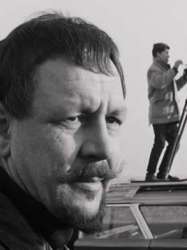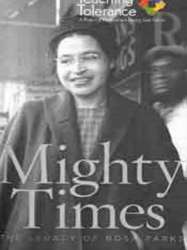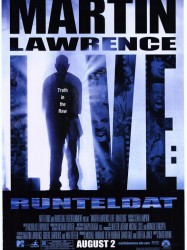The Price of Survival is a film of genre Documentary directed by Louis van Gasteren
The Price of Survival (2003)

If you like this film, let us know!
The Price Of Survival (De prijs van overleven) is a 2003 documentary film by Dutch director Louis van Gasteren and a sequel to Begrijpt U Nu Waarom Ik Huil? (Do You Understand Now Why I Cry?).
The documentary is about the impact of post-traumatic stress syndrome on the family of a Nazi concentration camp survivor named Joop. Joop cannot forget his experiences in a concentration camp during World War II and these emotions are transferred to his wife Dina and their three children. The eldest son and daughter have long since lost contact with their parents and respond in the documentary only by letter. The youngest son Reinier, together with his wife Hadelinde, stayed in contact with his parents. Joop died in 2000, yet the camp experiences are seemingly 'inherited,' as Joop's descendants continue to pay the emotional price of his survival. The Price Of Survival won the Golden Calf for Best Short Documentary at the 2003 Netherlands Film Festival. 56 minutes. Color.
Comments
Leave comment :
Suggestions of similar film to The Price of Survival
There are 4 films with the same director, 8970 with the same cinematographic genres, to have finally 70 suggestions of similar films.If you liked The Price of Survival, you will probably like those similar films :

Beyond Words (1997)
, 28minutesDirected by Louis van Gasteren
Genres Documentary
Themes Documentaire sur une personnalité
The film begins in 1967 with extremely exotic and unusual scenes of a mast (a kind of Sufi God-intoxicated person that Baba worked with), followed by a scene of Baba washing the feet of lepers. Next the filmmaker greets Baba with a bougainvillea branch and proceeds to interview him on God-realization, drugs, and cinema. The film ends with a much older Van Gasteren returning to India three decades later in a reunion with Eruch Jessawala who originally interpreted Baba's gestures. Meher Baba has long died as the now more mature men exchange words and photos. Also in the final scenes, Louis van Gasteren dons a red turban that Meher Baba had given him during their meeting in 1967 and which he had not worn for 30 years. The turban was later donated to the Meher Spiritual Center in Myrtle Beach.
 , 1h2
, 1h2Directed by Louis van Gasteren
Genres Documentary
Themes Medical-themed films, Documentary films about war, Documentary films about historical events, Documentaire sur une personnalité, Documentary films about health care, Films about psychiatry, Films about disabilities, Political films, Documentary films about World War II

Hans, Life Before Death (1983)
, 2h35Directed by Louis van Gasteren
Genres Documentary
Themes Documentaire sur une personnalité
Rating68%






Nema Aviona Za Zagreb (2012)
, 1h22Directed by Louis van Gasteren
Origin France
Themes Films about films, Medical-themed films, Films about drugs, Documentary films about business, Documentary films about the visual arts, Documentary films about the film industry, Documentary films about law, Documentaire sur une personnalité, Documentary films about health care, Autobiographical documentary films
Actors Louis van Gasteren, Michèle Girardon, Nicholas Parsons
As the film opens, a ninety-year-old Louis van Gasteren—a documentary filmmaker and artist famed in the Netherlands—is seated in a video editing suite, watching scenes of himself in the 1960s, a time when “anything was possible.” He reflects on how much he has changed, and that he is that same person and yet is not.

My Left Breast (2002)
Genres Documentary
Themes Medical-themed films, Films about sexuality, LGBT-related films, Documentaire sur l'homosexualité, Documentary films about health care, Films about cancer, LGBT-related films, LGBT-related film, Lesbian-related films
Rating68%






My Four Children (2002)
, 53minutesOrigin Israel
Genres Documentary
Themes Films about adoption, Films about children, Films about families, Documentaire sur une personnalité, Films about disabilities
 , 40minutes
, 40minutesDirected by Robert Houston
Origin USA
Genres Documentary
Themes Documentary films about historical events, Documentary films about politics, Political films
Actors Nick LaTour
Rating78%






MC5: A True Testimonial (2002)
, 1h59Genres Documentary, Musical
Themes Films about music and musicians, Documentary films about music and musicians, Documentaire sur une personnalité, Musical films
Actors Wayne Kramer, Michael Davis
Rating77%






Maxime, McDuff & McDo (2002)
, 52minutesDirected by Magnus Isacsson
Origin Canada
Genres Documentary
Themes Films about the labor movement, Documentary films about politics, Documentary films about cities, Political films
 , 1h53
, 1h53Directed by Martin Lawrence, David Raynr
Origin USA
Genres Comedy, Documentary
Themes Films about music and musicians, Documentary films about music and musicians, Documentaire sur une personnalité, Musical films
Actors Martin Lawrence, Nancy O'Dell, Mikki Padilla
Rating54%





 Connection
Connection